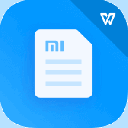










Digital Electronics

Beschreibung von Digital Electronics
Digital Electronics is an important subject, common for Electrical, Electronics, and Instrumentation Engineering students. It deals with the theory and practical knowledge of Digital Systems and how they are implemented in various digital instruments. This App have been developed based on the latest GATE syllabus and will be useful for Electronics Engineering students as well as for GATE, IES and other PSU exams preparation.
Digital Electronics is an Electronics that uses binary numbers of 1 and 0 to represent information
1. Number Base System
1.1 Logic Operations
1.2 Mathematical Operations
1.3 Building Circuits with Breadboards
1.4 Digital Logic Gates
2. Logic Gates
2.1 Logic Gates/Fundamental Digital Gates
2.2 Logic Gates/Combinational Gates
2.3 Logic Gates/Basic Logic Gates Summary
2.4 Logic Gates Summary
3. Digital Device
3.1 Mathematic and Logic Operations
3.2 Synchronous Device
3.3 Asynchronous Device
4. Digital Signal Processing
4.1 Digital Data
4.2 Data Encoder
4.3 Data Selector
5. Digital Controllers
5.1 Controller Concepts
5.2 Arduino
5.3 Blinking Light
6. Communication Standards
6.1 Open Standards
6.2 ANSI
6.3 ISO
Some of the topics Covered in the app are:
1. Decimal System
2. Binary System
3. Representing Binary Quantities
4. Octal and Hexadecimal System
5. Binary-To-Decimal and Decimal-to-binary Conversion
6. Binary-To-Octal / Octal-To-Binary Conversion
7. Hexadecimal to Decimal/Decimal to Hexadecimal Conversion
8. Binary-To-Hexadecimal /Hexadecimal-To-Binary Conversion
9. Floating-Point Numbers
10. Binary Codes
11. Non Weighted Codes
12. Binary - Gray Code Conversion
13. Gray Code - Binary Conversion
14. Gray Code Applications
15. Alphanumeric Codes-ASCII code
16. EBCDIC code
17. Seven-segment Display Code
18. Error Detecting Codes
19. Error Correcting Codes.
20. Boolean Switching Algebras
21. Boolean Algebra Theorems
22. Minterms and Maxterms
23. Sum Of Products (SOP) and Product Of Sum (POS)
24. AND-Logic Gate
25. OR-Logic Gate
26. NOT-Logic Gate
27. NAND-Logic Gate
28. NOR-Logic Gate
29. XNOR-Logic Gate
30. Universal Gates
31. Realization of logic function using NAND gates
32. Realization of logic gates using NAND gates
33. Realization of logic function using NOR gates
34. Realization of logic gates using NOR gates.
35. Tristate Logic Gates
36. AND-OR-INVERT Gates
37. Schmitt Gates
38. Karnaugh Maps
39. Minimization Technique
40. 2-Variable K-Map
41. Grouping/Circling K-maps
42. Example of 2-Variable K-Map groups
43. 3-Variable K-Map
44. Example of 3-Variable K-Map
45. 4-Variable K-Map
46. Example of 4-Variable K-Map
47. 5-Variable K-Map
48. QUINE-Mccluskey minimization
49. QUINE-Mccluskey minimization Method-Example
50. Multiplexer
51. 2x1 Multiplexer
52. Design of a 2:1 Mux
53. 4:1 MUX
54. 8-to-1 multiplexer from Smaller MUX
55. 16-to-1 multiplexer from 4:1 mux
56. De-multiplexers
57. Mechanical Equivalent of a De-Multiplexer
58. 1-to-4 De-multiplexer
59. Boolean Function Implementation using Mux and de-Mux
60. 3-variable Function Using 4-to-1 mux
61. 2 to 4 Decoder using Demux
62. Arithmetic circuits-Adders
63. Full Adder
64. Full Adder using AND-OR
65. n-bit Carry Ripple Adder
66. 4-bit Carry Ripple Adder
67. Carry Look-Ahead Adder
68. BCD Adder
69. 2-digit BCD Adder
70. Subtracter
71. Full Subtracter
72. Parallel Binary Subtracter
73. Serial Binary Subtracter.
74. Comparators
75. Encoders
76. Decimal-to-Binary Encoder
77. Priority Encoder
78. Introduction to Sequential Circuit
79. Concept of Sequential Logic
80. Input enable signals
81. RS Latch
82. RS Latch with Clock
83. Setup and Hold Time
84. D Latch
85. JK Latch
86. T Latch
87. R-S Flip-Flop with Active LOW Inputs
88. R-S Flip-Flop with Active HIGH Inputs
89. R-S Flip-Flop Implementation with NOR gates
90. Clocked R-S Flip-Flop
Digital Electronics is part of electronics engineering education courses and technology degree programs of various universities.
Digital Electronics ist ein wichtiges Thema, gemeinsam für Elektrotechnik, Elektronik und Gerätetechnik Studenten. Es befasst sich mit der Theorie und praktische Kenntnisse der Digital Systems und wie sie in verschiedenen digitalen Instrumente umgesetzt werden. Diese App wurde basierend auf dem neuesten GATE Lehrplan entwickelt und wird für Electronics Engineering Studenten sowie für GATE, IES und andere PSU Prüfungsvorbereitung nützlich sein.
Digital Electronics ist ein Elektronik, die binären Zahlen von 1 und 0 verwendet, um Informationen darzustellen
1. Anzahl Basissystem
1.1 Logikoperationen
1.2 Mathematische Operationen
1.3 Gebäude Schaltungen mit Experimentiersyst
1.4 Digital-Logikgatter
2. Logikgatter
2.1 Logikgatter / Fundamental Digitale Tore
2.2 Logikgatter / kombinatorische Tore
2.3 Logikgatter / Basislogikgatter Zusammenfassung
2.4 Logikgatter Zusammenfassung
3. Digital Device
3.1 Mathematische und logische Operationen
3.2 Synchrone Geräte
3.3 asynchrones Gerät
4. Digitale Signalverarbeitung
4.1 Digital Data
4.2 Daten Encoder
4.3 Datenauswahl
5. Digitaler Controller
5.1 Controller-Konzepte
5.2 Arduino
5.3 Blinkleuchten
6. Kommunikationsstandards
6.1 Offene Standards
6.2 ANSI
6.3 ISO
Einige der Themen in der App abgedeckt sind:
1. Dezimalsystem
2. Binär-System
3. Darstellen Binärgrößen
4. Oktal und Hexadezimal-System
5. Binär-Dezimal und Dezimal-Binär-Umwandlung
6. Binär-Octal / Oktal-Binär-Umwandlung
7. Hexadezimal Dezimal / Dezimal zu Hexadezimalumrechnung
8. Binär-Hexadezimal / Hexadezimal-Binär-Umwandlung
9. Gleitkommazahlen
10. Binäre Codes
11. Nicht gewichteten Codes
12. Binary - Gray Code-Umwandlung
13. Gray Code - Binary Conversion
14. Gray Code-Anwendungen
15. alphanumerische Codes-ASCII-Code
16. EBCDIC-Code
17. Sieben-Segment-Anzeige-Code
18. Fehlererfassungscodes
19. Error Correcting Codes.
20. Boolesche Schalt Algebras
21. Boolesche Algebra Theoreme
22. Minterme und Maxterms
23. Summe der Produkte (SOP) und Product Of Sum (POS)
24. UND-Logik-Gatter
25. ODER-Logik-Gatter
26. NOT-Logic-Gate
27. NAND-Logik-Gatter
28. NOR-Logik-Gatter
29. XNOR-Logic-Gate
30. Universal-Tore
31. Die Realisierung der Logik-Funktion unter Verwendung von NAND-Gattern
32. Realisierung von Logikgattern NAND-Gatter unter Verwendung
33. Die Realisierung der Logik-Funktion unter Verwendung von NOR-Gattern
34. Realisierung von Logikgattern verwendet NOR-Gattern.
35. Tristate-Logikgatter
36. UND-ODER-Gatter INVERT
37. Schmitt Tore
38. Karnaugh Karten
39. Minimierungstechnik
40. 2-Variable K-Map
41. Gruppierung / Umkreisen K-Karten
42. Beispiel 2-Variable K-Map Gruppen
43. 3-Variable K-Map
44. Beispiel von 3-Variable K-Map
45. 4-Variable K-Map
46. Beispiel 4-Variable K-Map
47. 5-Variable K-Map
48. QUINE-Mccluskey Minimierung
49. QUINE Mccluskey-Minimierungsverfahren-Beispiel
50. Multiplexer
51. 2x1-Multiplexer
52. Entwurf eines 2: 1-Mux
53. 4: 1 MUX
54. 8-zu-1-Multiplexer MUX aus kleinerem
55. 16-zu-1-Multiplexer 4: 1-Mux
56. De-Multiplexer
57. Mechanische Equivalent eines De-Multiplexer
58. 1-zu-4-Multiplexer-De
59. Boolean Implementierung Funktion mit Mux und de-Mux
60. 3-variable Funktion Unter Verwendung von 4-zu-1-Mux
61. 2 bis 4 Decoder Demux Verwendung
62. arithmetischen Schaltungen-Adders
63. Volladdierer
64. Volladdierer mit AND-OR
65. n-Bit-Übertrag Ripple Adder
66. 4-Bit-Übertrags Ripple Adder
67. Carry Look-Ahead Adder
68. BCD Adder
69. 2-stellige BCD Adder
70. Subtrahierers
71. Vollsubtrahierer
72. Parallel Binary Subtrahierers
73. Serielle Binary Subtrahierers.
74. Komparatoren
75. Encoder
76. Dezimal-Binär-Encoder
77. Prioritätscodierer
78. Einführung in die sequentielle Schaltung
79. Konzept der sequenzielle Logik
80. Eingabefreigabesignale
81. RS-Latch
82. RS-Latch mit Clock
83. Setup-und Haltezeit
84 D Latch
85. JK Latch
86. T Latch
87. R-S Flip-Flop mit LOW aktiv Eingängen
88. R-S Flip-Flop mit Aktiv-HIGH-Eingänge
89. R-S Flip-Flop Umsetzung mit NOR-Gattern
90. Clocked R-S-Flip-Flop
Digital Electronics ist ein Teil der Elektronik Ingenieurausbildung Kurse und Technik-Studiengänge von verschiedenen Universitäten.


























